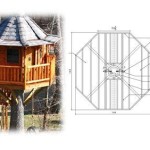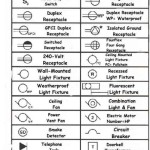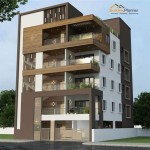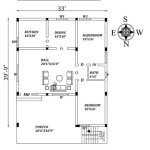Handicap Tiny House Plans: Designing for Accessibility and Independence
The tiny house movement emphasizes downsizing and simplified living, often prioritizing sustainability and affordability. However, the standard tiny house design frequently overlooks the needs of individuals with disabilities. Handicap tiny house plans address this oversight by incorporating specific design elements that promote accessibility, safety, and independence for individuals with limited mobility or other physical challenges. Planning and execution of such a project necessitate meticulous attention to detail, navigating building codes, and understanding the specific needs of the intended occupant.
Designing a handicap-accessible tiny house involves more than just adding a ramp. It requires rethinking the entire layout, from the entrance and hallways to the kitchen, bathroom, and sleeping areas. Consideration must be given to wheelchair maneuverability, reach ranges, turning radiuses, and the placement of essential appliances and fixtures. The intent is to create a space that is not only functional but also comfortable and aesthetically pleasing, fostering a sense of belonging and empowerment.
Key Considerations in Handicap Tiny House Design
Designing a handicap-accessible tiny house requires careful planning and consideration of various factors. These factors range from the basic layout of the home to the specific needs of the occupant.
1. Accessibility and Maneuverability: The primary focus of handicap tiny house plans is accessibility. This begins with a zero-step entry, achieved through a ramp or a lift system. Ramps need to adhere to specific slope requirements, typically a 1:12 ratio (one inch of rise for every twelve inches of run), to ensure safe and comfortable access for wheelchair users. The ramp's surface should be non-slip, especially in areas prone to moisture. Entry doors need to be wide enough to accommodate wheelchairs, generally a minimum of 36 inches. Interior doorways and hallways should also maintain this minimum width to allow for easy movement throughout the tiny house. Turning radiuses are crucial, particularly in high-traffic areas like the kitchen and bathroom. A standard wheelchair requires a turning radius of at least 60 inches, which needs to be incorporated into the design. The flooring should be smooth and non-slip, avoiding thick carpets or raised thresholds that can impede wheelchair movement. Grab bars strategically placed in the bathroom, near the toilet and shower, provide added support and safety.
2. Adaptable and Universal Design Principles: Universal design aims to create spaces that are usable by people of all abilities, without the need for specialized adaptations. Incorporating universal design principles into handicap tiny house plans enhances both accessibility and usability for everyone. Adjustable countertops in the kitchen allow for comfortable food preparation for individuals of varying heights, including wheelchair users. Lever-handled door hardware is easier to operate compared to knobs, especially for individuals with limited hand strength or dexterity. Rocker-style light switches are also more accessible than traditional toggle switches. Ensuring adequate lighting throughout the tiny house is essential for safety and visibility, particularly for individuals with visual impairments. Open shelving in the kitchen and bathroom allows for easy access to frequently used items. Forward reach ranges should be considered when positioning shelves and storage; items should be within easy reach from a seated position. Selecting appliances with front-mounted controls can also improve accessibility.
3. Optimized Space Planning: Space is a premium in a tiny house, and efficient space planning is even more critical in a handicap-accessible design. Every square inch must be used strategically to maximize functionality and accessibility. A carefully designed layout can make a small space feel larger and more comfortable. Multi-functional furniture, such as a convertible sofa bed or a folding dining table, can save space and provide flexibility. Vertical storage solutions, like shelving units and wall-mounted cabinets, can help to maximize storage space without compromising accessibility. A compact, roll-in shower is a space-saving alternative to a traditional bathtub. Wall-mounted sinks in the bathroom can free up floor space and allow for easy wheelchair access. Consider a pocket door instead of a swinging door to save space, especially in tight areas like the bathroom. The layout should prioritize clear pathways and minimize obstacles that can impede movement.
4. Safety Features and Emergency Preparedness: Safety is paramount in any home, but it is especially crucial in a handicap-accessible tiny house. Install smoke detectors and carbon monoxide detectors throughout the tiny house, ensuring they are audible and visible. Consider installing a visual fire alarm for individuals with hearing impairments. A readily accessible fire extinguisher should be located near the kitchen. Ensure that all electrical outlets are grounded and protected by ground fault circuit interrupters (GFCIs), particularly in the bathroom and kitchen. An emergency communication system, such as a medical alert device, can provide peace of mind and allow for quick access to assistance in case of an emergency. Clearly marked emergency exits should be easily accessible and free of obstructions. A first-aid kit should be kept in an easily accessible location. Regular maintenance of ramps, lifts, and other accessibility features is essential to ensure their safe and reliable operation.
Addressing Specific Accessibility Needs
Beyond the general principles of handicap-accessible design, it is crucial to tailor the tiny house to the specific needs of the individual occupant. This requires a thorough understanding of their abilities, limitations, and preferences.
1. Visual Impairments: For individuals with visual impairments, tactile cues and contrasting colors can significantly improve safety and navigation. Using textured flooring to differentiate between different areas of the tiny house, such as the kitchen and living room, can help with orientation. Highlighting edges and corners with contrasting colors can improve visibility and prevent accidents. Braille signage can be used to label switches, controls, and appliances. Voice-activated controls for lighting, temperature, and other functions can enhance independence. Good lighting is essential, with a focus on minimizing glare. Consider using smart home technology to control various aspects of the tiny house, such as lighting and temperature, through voice commands.
2. Hearing Impairments: Individuals with hearing impairments require visual cues and assistive technology. Installing visual fire alarms and doorbells provides alerts that are not dependent on sound. A vibrating alarm clock can be used to wake up in the morning. Consider using smart home technology to provide visual notifications for various events, such as incoming phone calls or text messages. Captioning can be enabled on televisions and other media devices. Improve acoustics by using sound-absorbing materials, such as curtains and rugs, to reduce echoes and reverberation. Clear line of sight is important for communication, especially when using sign language.
3. Cognitive Impairments: For individuals with cognitive impairments, simplicity and predictability are key. A well-organized and clutter-free environment can reduce confusion and anxiety. Using visual cues, such as labels and color-coding, can help with organization and task completion. Consider using smart home technology to simplify daily routines, such as setting reminders and automating tasks. Ensure that safety features, such as stove shut-off timers and medication dispensers, are in place to prevent accidents. Supervise use of potentially dangerous appliances.
4. Respiratory Issues: Air quality is a critical factor for individuals with respiratory issues. Use low-VOC (volatile organic compound) paints and building materials to minimize the release of harmful chemicals. Install an air purifier with a HEPA filter to remove allergens and pollutants from the air. Regularly clean and maintain the HVAC system to ensure optimal air circulation and filtration. Avoid using wood-burning stoves or fireplaces, as they can release harmful particles into the air. Consider installing a dehumidifier to control humidity levels and prevent mold growth. Maintain a smoke-free environment.
Navigating Building Codes and Regulations
Handicap tiny house plans must adhere to local building codes and regulations, which can vary depending on the location. It is essential to consult with local building officials and obtain the necessary permits before starting construction. The Americans with Disabilities Act (ADA) provides guidelines for accessibility in public accommodations, but it does not directly apply to private residences like tiny houses. However, many of the ADA standards can be used as a reference for designing a handicap-accessible tiny house. Some jurisdictions may have specific accessibility requirements for residential buildings, so it is crucial to research and understand the local regulations. Mobile tiny houses may be subject to additional regulations related to transportation and safety. Adhering to building codes and regulations ensures that the tiny house is safe, accessible, and legally compliant.
The International Residential Code (IRC) is a widely adopted model building code that includes provisions for accessibility. Chapter 11 of the IRC addresses accessibility requirements for dwelling units, including requirements for accessible routes, entrances, bathrooms, and kitchens. Some jurisdictions may have adopted the IRC with modifications, so it is essential to check the local building codes. Working with a qualified architect or building contractor who is familiar with accessibility standards can help to ensure that the tiny house meets all applicable requirements. The process of obtaining building permits can be complex and time-consuming, so it is important to start early and be prepared to provide detailed plans and specifications.
Designing and building a handicap-accessible tiny house is a challenging but rewarding endeavor. By carefully considering the accessibility needs of the occupant, incorporating universal design principles, and adhering to building codes and regulations, it is possible to create a small space that is both functional and empowering. Meticulous planning, attention to detail, and a commitment to creating an inclusive environment are essential to achieving success.

Exclusive Wheelchair Accessible Cottage House Plan 871006nst Architectural Designs Plans

The Tiny Guide To House Retirement Loft Floor Plans Accessible

798 Sq Ft Wheelchair Accessible Small House Plans Tiny

798 Sq Ft Wheelchair Accessible Small House Plans Tiny

Wheelchair Accessible Small House Plans Drummond

Wheelchair Accessible Floor Plan House Plans

Wheelchair Accessible Small House Plans Drummond

Wheelchair Accessible Small House Plans Drummond

Small Space Accessibility Accessible Homes

Unit D Handicapped 1 Bedroom Calvary Center Cooperative Floor Plans Accessible House Wheelchair Small








